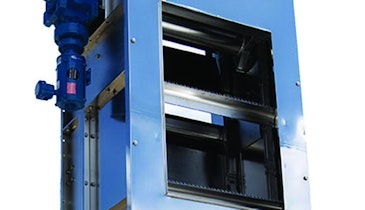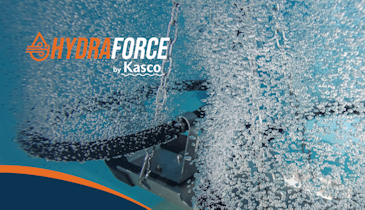Interested in Instrumentation?
Get Instrumentation articles, news and videos right in your inbox! Sign up now.
Instrumentation + Get AlertsWastewater treatment, oil and gas, manufacturing and the military share a key element: each uses machine assets that must run consistently in controlled, precise manners, despite extreme environmental settings. Controllers and actuators are the computer and mechanical elements responsible for this component of the industrial process.
With the past few years of sensor sensation, actuators have gotten the silent treatment from tech media. However, these linchpins of industry have received their own upgrades as mechanical engineering intersects with AI, IIoT and advanced materials. Modern actuators can operate in severe conditions, interface with a range of technology and push edge computing to new limits, especially in robotics applications.
What is an actuator?
The actuator is the “action” equipment of the machine, automating the process. It facilitates the motion of a machine by providing essential force or torque. Like a sensor, an actuator is a transducer, but in a different direction. It takes an electrical signal and translates it into a physical motion, instead of vice versa like a sensor.
An actuator is the sensor’s best friend. When a sensor collects data about a scenario or setting, the information is used to guide the actuator. Likewise, the difficulties an actuator faces helps calibrate and refine the purpose of the sensor’s data collection.
An example of an actuator in oil and gas might be an electric motor. With wastewater management, a hydraulic system could actuate a fluid-based process. Military actuators are responsible for activity conducted by tanks, fighter planes, ships and robotic drones.
What types of actuators are there?
Actuators aren’t determined by the industry where they function, but their driver and direction. They have a range of motion, but the primary directions are linear and rotary. Linear actuators can have an up/down motion, like a piston, or a sliding motion. Rotary actuators have a rotating motion around a shaft, like a steering wheel.
There are five major driver categories:
Hydraulic — This kind is a cylinder or fluid motor that uses hydraulic power to facilitate mechanical operation. Hydraulic power is created by pressurized liquid moving across pipes. The output is either linear, rotary or oscillatory. These types of actuators exert great force, but slowly.
Electrical — This equipment has a motor that converts electrical energy to mechanical torque. It does not use any oil, unlike most actuators, which makes it appropriate for multi-turn valves.
Magnetic and Thermal — Although these two types of energies have different forms, they both rely on materials that conduct thermal or magnetic energy. These actuators tend to be commercially used and are compact and economical without losing power density.
Pneumatic — This style converts energy formed by a vacuum or compressed air at a high pressure into a motion. It quickly responds to starting and stopping, making it an ideal choice for central valves, such as wastewater treatment. Small pressure changes let these actuators exert large forces. A common model of a pneumatic actuator is the rack and pinion format, a rotary type.
Precision actuation: What does it mean?
Precision actuation means that a process functions within an extremely small range of error, with high consistency. Precision actuation most often involves processes that occur in extreme conditions: arctic temperatures, blistering heat, severe winds, high pressure, wet conditions and isolation.
An example of a machine process that requires precision actuation is turret stabilization on military ground vehicles. A turret is the structure on top of the vehicle where soldiers may take sightings or fire bullets. When engaging in shooting, the firing arm must lever up and down as it aims for targets. A traverse actuator will ensure that the arm never raises past a limit or at such a speed that it disrupts the normal operation of the vehicle. It may do this hundreds of times during battle and in heavy rain or at high operating temperatures.
Smart actuation
Smart actuation is simply precision actuation enhanced by certain technologies. Smart actuation is a field of robotics and automation. Most actuators in use today are controlled by computers preprogrammed with specific actions or manually activated, the latter more applicable to emergency actuators.
Smart actuators are automated to a greater degree. They can receive instructions, record errors and predict problems. Smart actuation allows warehouses, military operations and other high-risk facilities to reduce human supervision or presence, increasing safety or limiting exposure to dangerous elements. Smart actuation also contributes to precise functioning and decreases costs via reduced testing, predictive maintenance and increased uptime.
The three primary influences on smart actuation are IoT and edge computing, blockchain and material science advancement.
Blockchain
Actuators using blockchain benefit in two ways. First, blockchain is used to store records. Secondly, blockchain can be used to activate commands when a set of circumstances is met. Imagine these two applications in a manufacturing facility that produces pharmaceutical drugs.
A valve actuator is essential to the drug making process, as it disburses liquids to be mixed and portions out exact measures of chemicals necessary to the drug’s creation. It must also be cleansed regularly to meet codes and remain sterile. An intelligent actuator can record every instance that it has been cleaned or disbursed chemicals. These data entries cannot be altered, which makes the pharmaceutical supply chain more trustworthy.
Edge computing and actuation
An edge network is an IIoT network. Sensors connect directly to actuators in a circular loop of feedback and data collection. Gateway nodes may connect these two types of devices to a central cloud infrastructure, but an edge network does not require one. Actuators equipped with sensors can adjust as they function, constantly receiving feedback analysis from sensors.
Consider a piston in an extreme operating temperature. As it slides up and down at a rapid pace — perhaps firing bullets or stamping a metal — it creates heat. A thermal sensor detects the exterior operating temperature and can instruct the piston to optimize its performance, reducing heat creation, or switch to a heat-friendly configuration.
Material science advancement
Actuators can be optimized materially, beginning the smart process during the design and building period of its lifetime. Stainless steel valves, piezoelectric crystal hydraulic flaps, and graphene-based actuators are all products of materials advancement. They have become lighter, more durable, more flexible, stronger and more powerful as the materials evolve to handle greater force with less exertion. Developing capable materials is essential to precision actuation in a rugged, smart environment.
Although robotics and automation are not foreign terms, it can be hard to see the trees for the forest of trends. Smart actuators are the direct result of robotics and automation. Although sensors are essential to creating an intelligent environment, interfacing outdated actuators with brand-new technology could diminish the sensor effectiveness.






